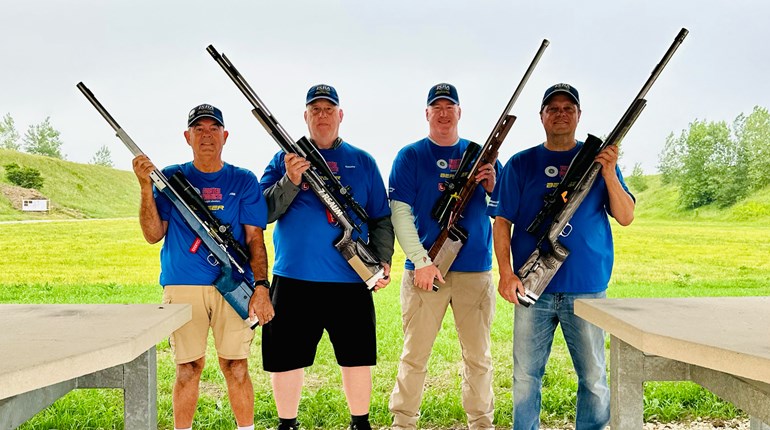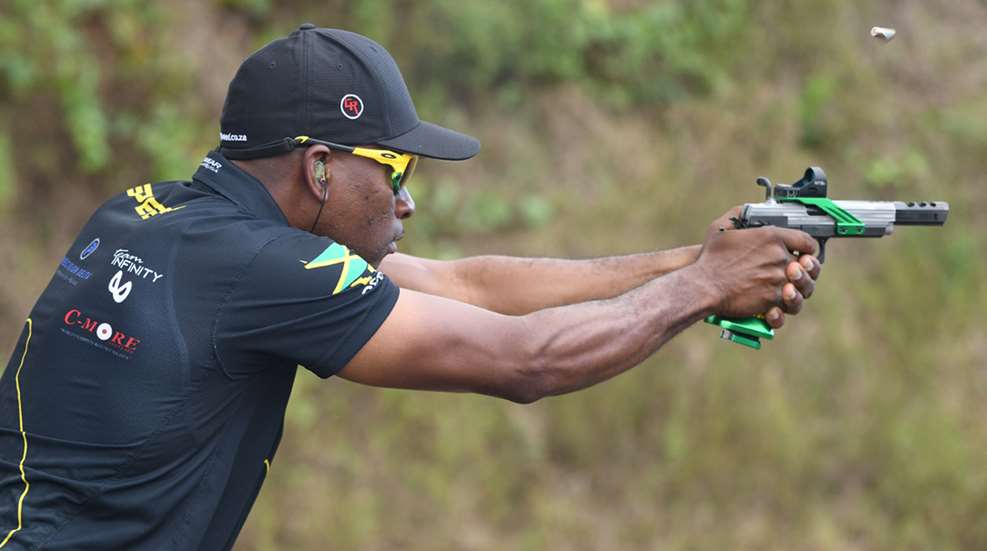
USPSA is a region under IPSC, and our affiliation with the International organization requires the U.S. region to hold an IPSC Nationals. However in 2020 and 2021, due to international covid restrictions, IPSC allowed regions an exemption on the requirement. At the same time, the scheduled IPSC World Shoot was getting rescheduled into 2022. The U.S. IPSC Nationals is a match that has been used to determine slot eligibility for those USPSA members who wish to compete at the IPSC World Shoot.
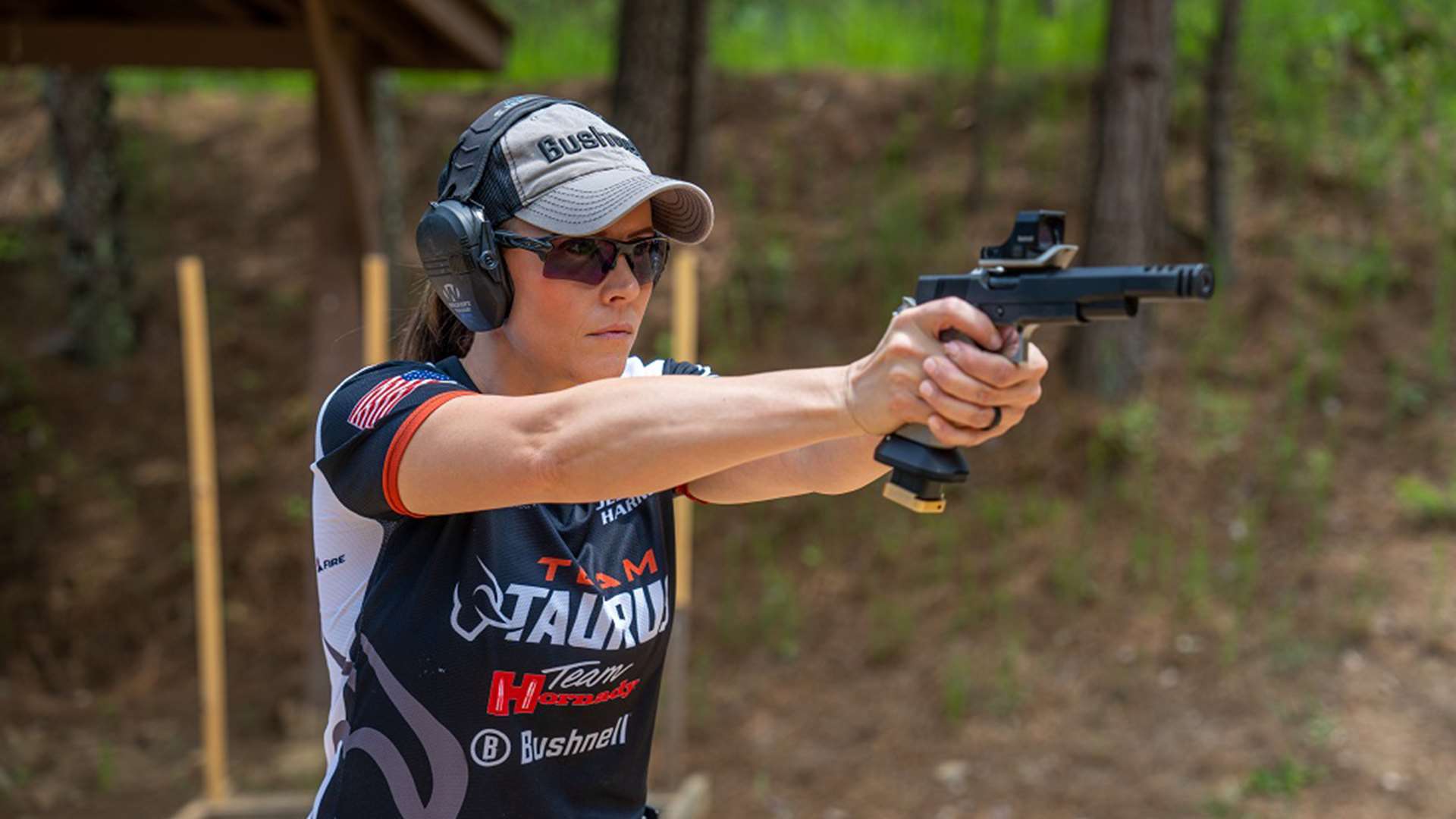
The USPSA bylaws require the Board of Directors to set a policy for determining the selection process for teams for international competition (3.1 vi) (13.1), this was voted on in February of 2023 and went into effect on March 1, 2023, in the minutes for the announced 2025 IPSC World Shoot. The 2023 U.S. IPSC National was a qualifying match per the posted policy.
The match was contracted to the Volusia County Gun Club at New Smyrna Beach, Florida, with Manny Bragg and Gorka Ibanez as the match directors. Gorka, after taking ownership of the gun club, immediately started working on improvements to the range, adding bays, buildings, props and other infrastructure in order to be able to hold larger championship matches. Over the past three years, there have continued to be improvements, along with lots of matches and training held at the range.
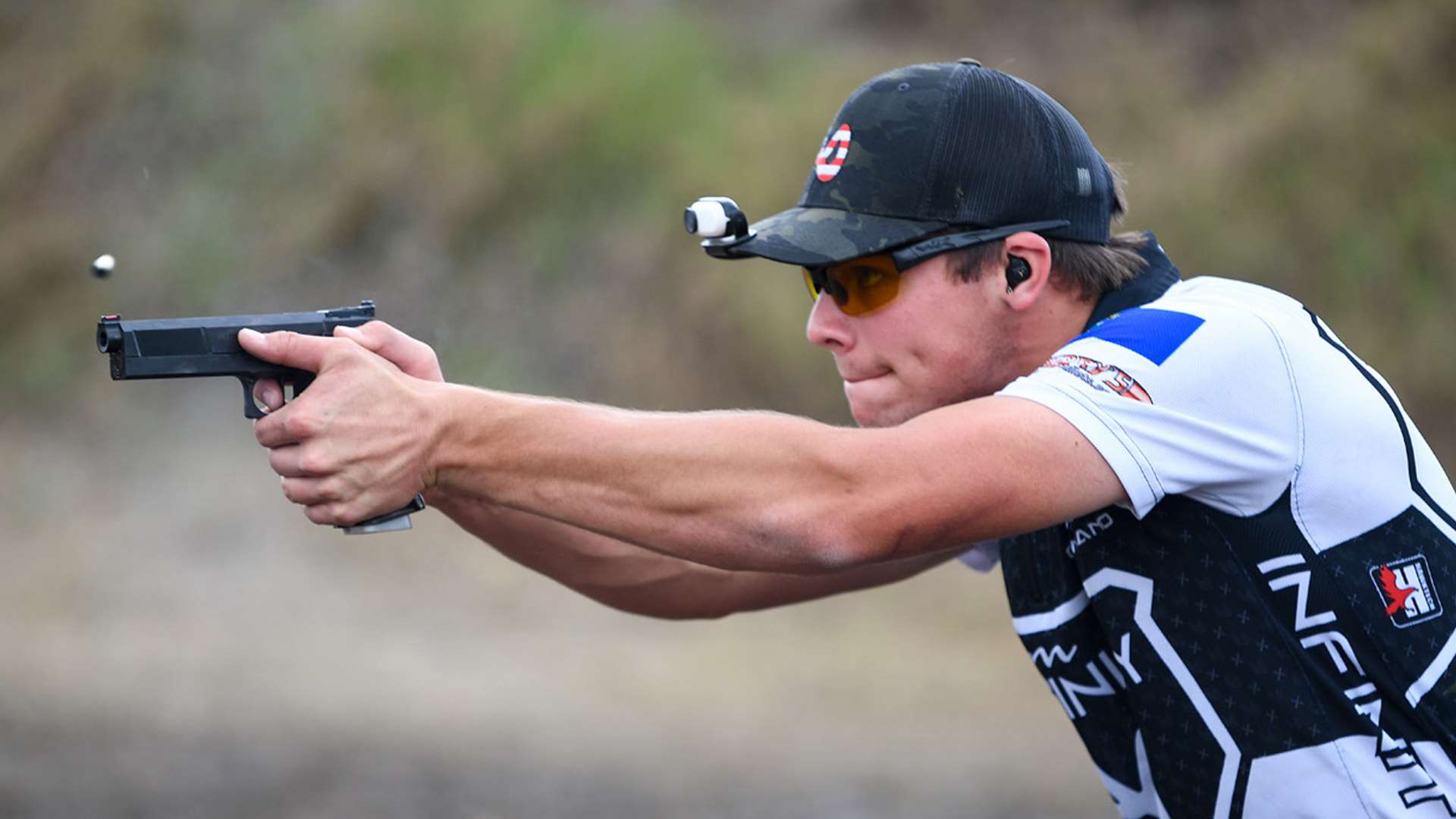
When it comes to putting on matches, Manny Bragg is no stranger. Whether it was USPSA Area 3 matches or ones run when he was at Universal Shooting Academy, or all the ones he has taken on while being the “Extreme GM,” USPSA Area 6 matches and even the Pro-Am, Manny is notorious for putting on great matches.
IPSC rules and divisions are the same but different. How is that for an explanation? Let’s start with the divisions. Open is the same except that the magazine length is restricted to 170 mm, while USPSA’s is 171.25 mm. This is an important difference. Also, Major power factor is 160 and requires a minimum 120-grain bullet. USPSA’s is 165 and you can run a minimum of 112-grain bullets. Standard division compares to Limited, but the power factor in IPSC is 170 for major. There is no magazine length restriction, because the firearm with magazine must fit the IPSC box. The Classic division in IPSC is similar to Single Stack, but has the same 170 power factor for major; the gun must fit the box, and there are restrictions on the size of the magazine well. Production and Production Optics are limited to 15 rounds in the magazine. Guns must be on their approved list and there are more restrictions on modifications that a competitor can do to the firearm. Revolver is also a 170 power factor and there is a rule that reloads must be completed after a maximum of six rounds being fired. There are also much stricter rules with holster and magazine pouch placement on the belt and body than in USPSA. I think I got the big ones covered. However, just know that if you are attending an IPSC match, you need to make sure that you have read the equipment rules and ensure your selected firearm meets the criteria of the division. Larger IPSC matches have an equipment check in process where your firearm is inspected to be compliant and is often checked at each stage by the Range Officer verifying your equipment check card.
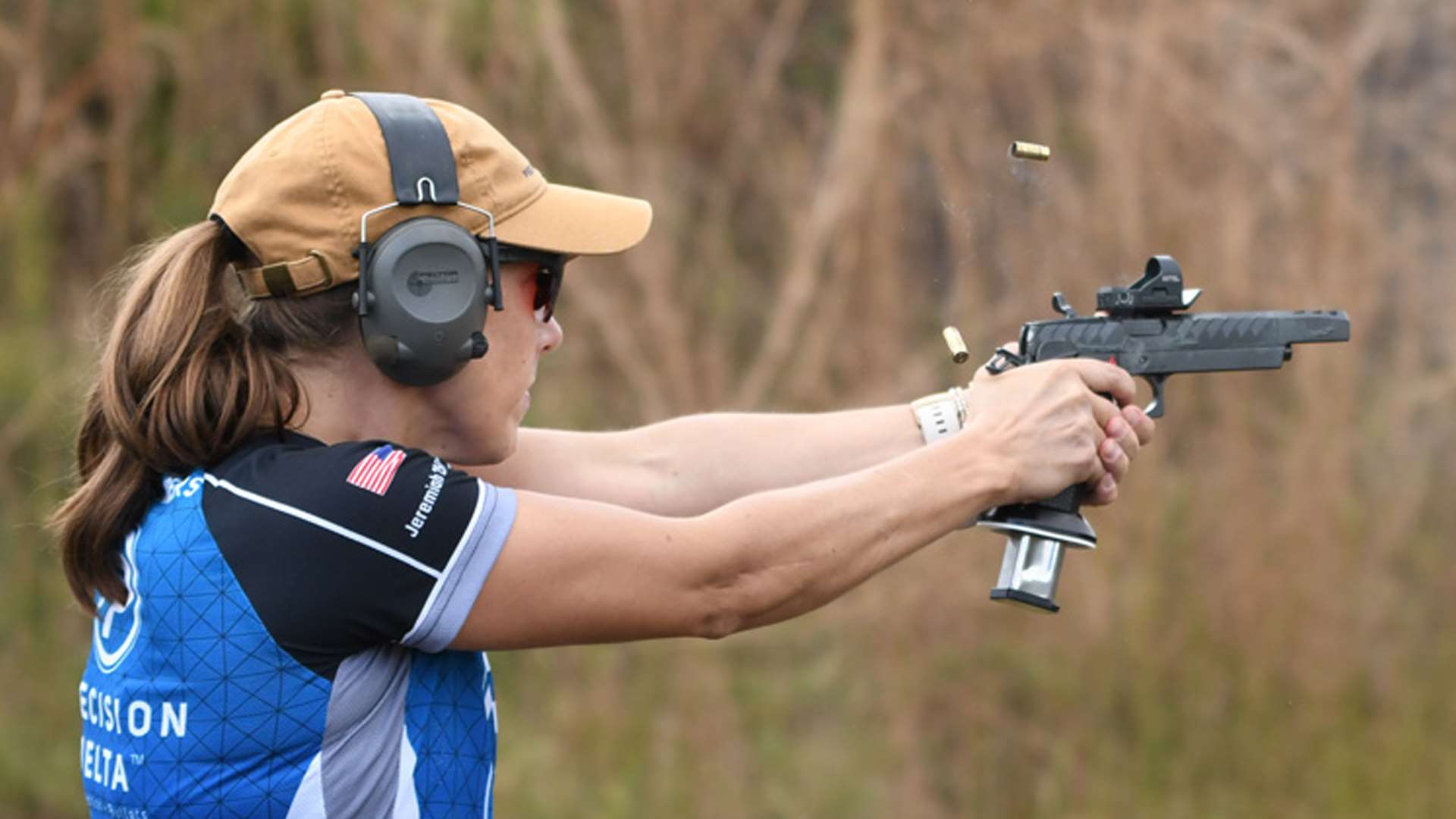
Larger IPSC matches also have strict rules about walking stages. You cannot walk stages except after your squad has been given the Written Stage Brief and then allowed to walk the stage. There are usually designated areas that you are to remain behind if your squad is not on the stage, or you can receive warning or procedurals. Again, make sure you read the rules before attendance. There are other rules with regards to no sight pictures or dry firing after the make ready command is given. Remaining inside the fault lines during a course of fire is required to avoid penalties, not just when you are shooting. Scoring is usually done ahead of time and with hand signals. The matches are usually broken down into a 3-2-1 format, with three short or speed shots courses, two medium and one long course. IPSC targets and poppers are used exclusively. The IPSC target has a 25-percent smaller A-zone, so hit factors are going to be lower no matter the type of stage. So like I said, it is the same but different.
Manny and Gorka jumped through many hoops to get the 18 IPSC-approved stages on the ground. There is also a similar process that Level 2 and 3 USPSA matches go through that ISPC matches like this go through with the stage approval process. The match ran from November 16-19, 2023, with different options of shooting days. Staff and some competitors shot Thursday. There was a one day option to shoot the entire match on Friday, or a two-day option for Saturday and Sunday, split up in either afternoon or morning. If you were lucky, you got the two-day option; otherwise, you were shooting in the rain and a cold snap that hit Florida during the Thursday and Friday match. The weather conditions were extremely difficult on those two days, not only on those shooting but on the staff working the match.
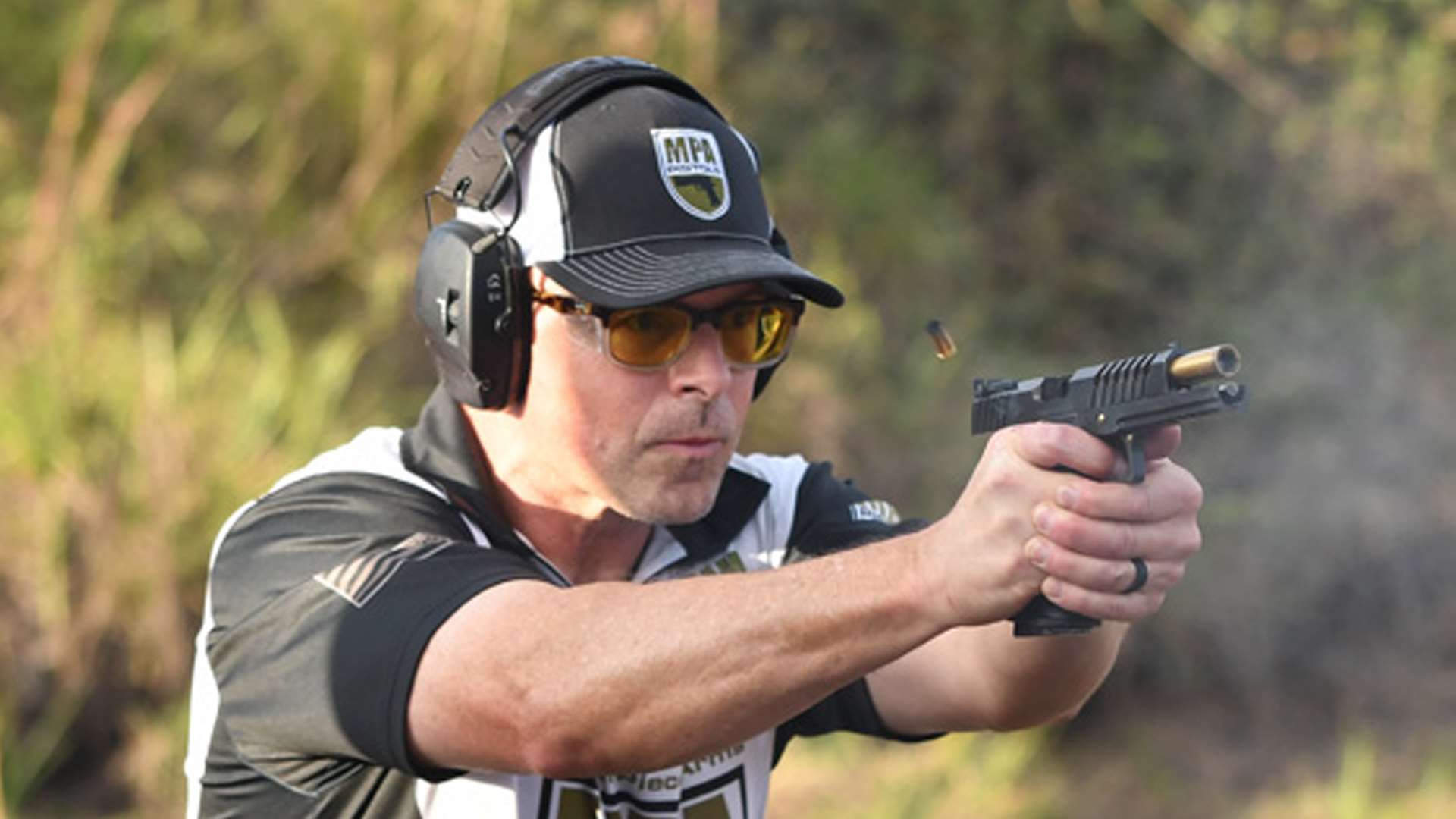
The weather cleared up Saturday and Sunday, leaving some of the bays in mud or standing water. The area of New Smyrna Beach and Volusia County had more than 14 inches of rain, and there were flood warnings, washed-out streets and closures around the area. It is a testament to the numerous range improvements that Gorka has made to the range over the last several years that they were still able to get the match done.
The match consisted of 18 stages, with a minimum round count of 340 for the 469 competitors that completed the match to face. I counted 36 poppers and nine activated swingers in the match. There were many stages with doubled-up swingers on the short 12-round stages. There was even one of the “one round per target” stages that are well known in a Manny Bragg match.
There were 20 scored competitors in Classic, 38 in Standard and 10 in Revolver. Open had 144, and Production Optics saw 149 as the two biggest divisions. The remaining were in Pistol-Caliber Carbine with 46 and 62 in Production. There were many international competitors, as well as lots of the familiar top USPSA competitors, since this was a qualifying match for the IPSC World Shoot.
The mix of stages was designed to give competitors a feel of what an IPSC match is like, but stayed a little closer to more of a USPSA flavor. All the start positions were an “anywhere in the shooting area,” whereas most IPSC stages have a more defined starting position. Stages 1 and 2 were both 12-round stages and definitely were more IPSC-typical stages. For the most part, no matter the division these two stages were shot the same. Stage 3 added some more options along with a swinger through a port. Stage 4, with a shooting area in a large U, was going to remind USPSA competitors that you had to stay in the shooting area and couldn’t take off running from one side to the other, cutting the distance.
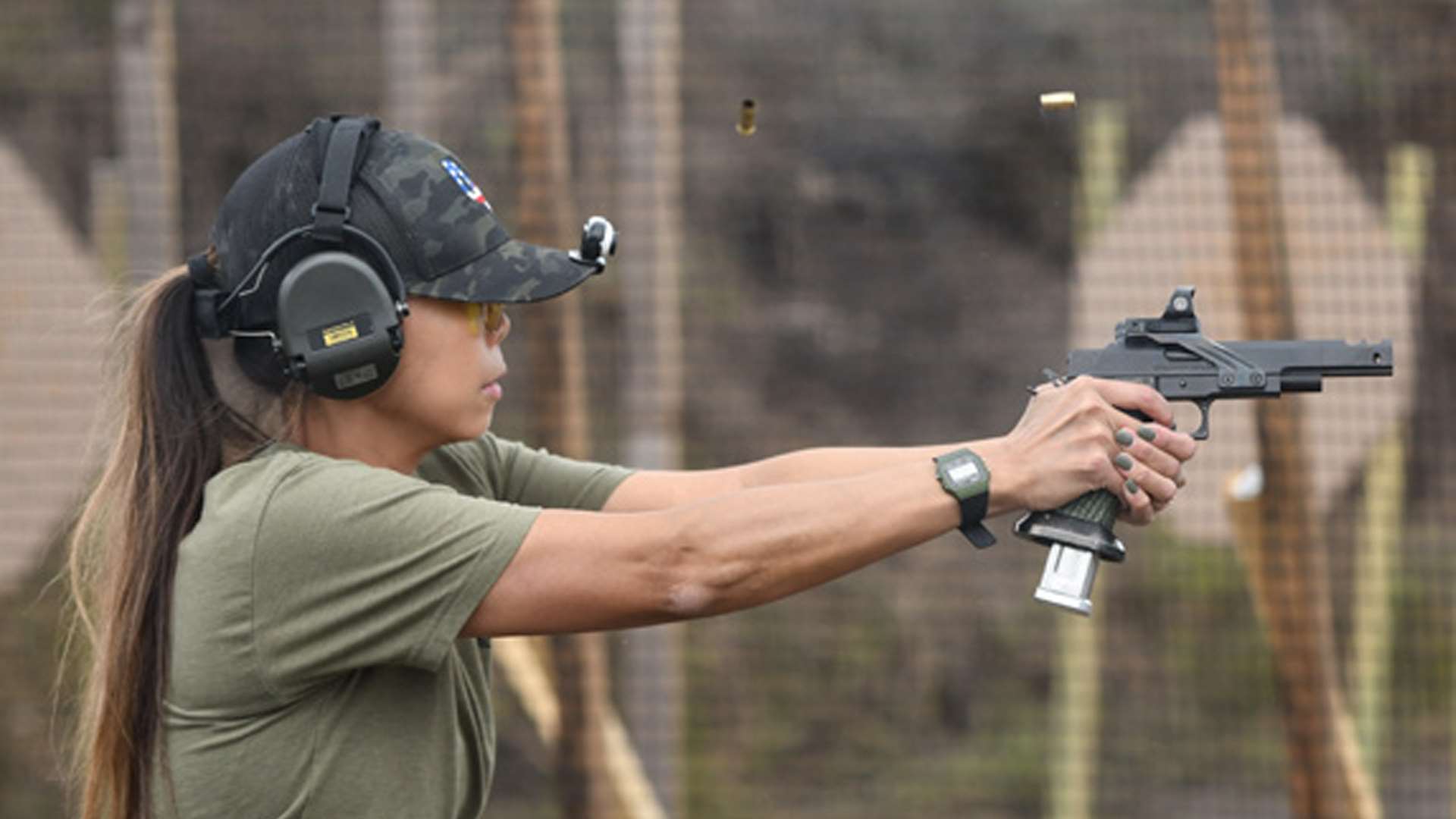
Something common in IPSC matches is the “Cooper Tunnel,” which competitors would find on Stage 5, a 24-round stage. No shooting was required from within the tunnel, but you had to go through it to get to the last shooting position. Stage 6 had 115 points, and had many different options on how competitors shot it. Stage 7 was the first long 32-round course that had some of the longer shots in the match. Stage 8 was one of the more physical stages, with an elevated platform that you had to climb stairs up and down to complete. This 32-round stage also ended with a fast moving swinger. Stages 9 and 10 were fast burner stages, one a 24-rounder and the other requiring 32 rounds.
Stages 11 and 12 were both 12-rounders. Stage 11 was an unloaded start with gun and all magazines on the table. Stage 12 was loaded gun on a table, with a mix of four poppers and two swingers. These were fast, fun little stages. Stage 13 was another 12-round stage that was laid out in a wide shooting area, something that a typical USPSA stage would look like but with twice as many targets. Stage 14 required the competitors to shoot through the port directly in front of them from the raised platform shooting area. Grabbing the hanging rope or the port with your weak- or strong-hand, you’d hang out the side around the port wall in order to engage targets and poppers on either side—a fun stage that forced strong- and weak-hand shooting in a unique way.
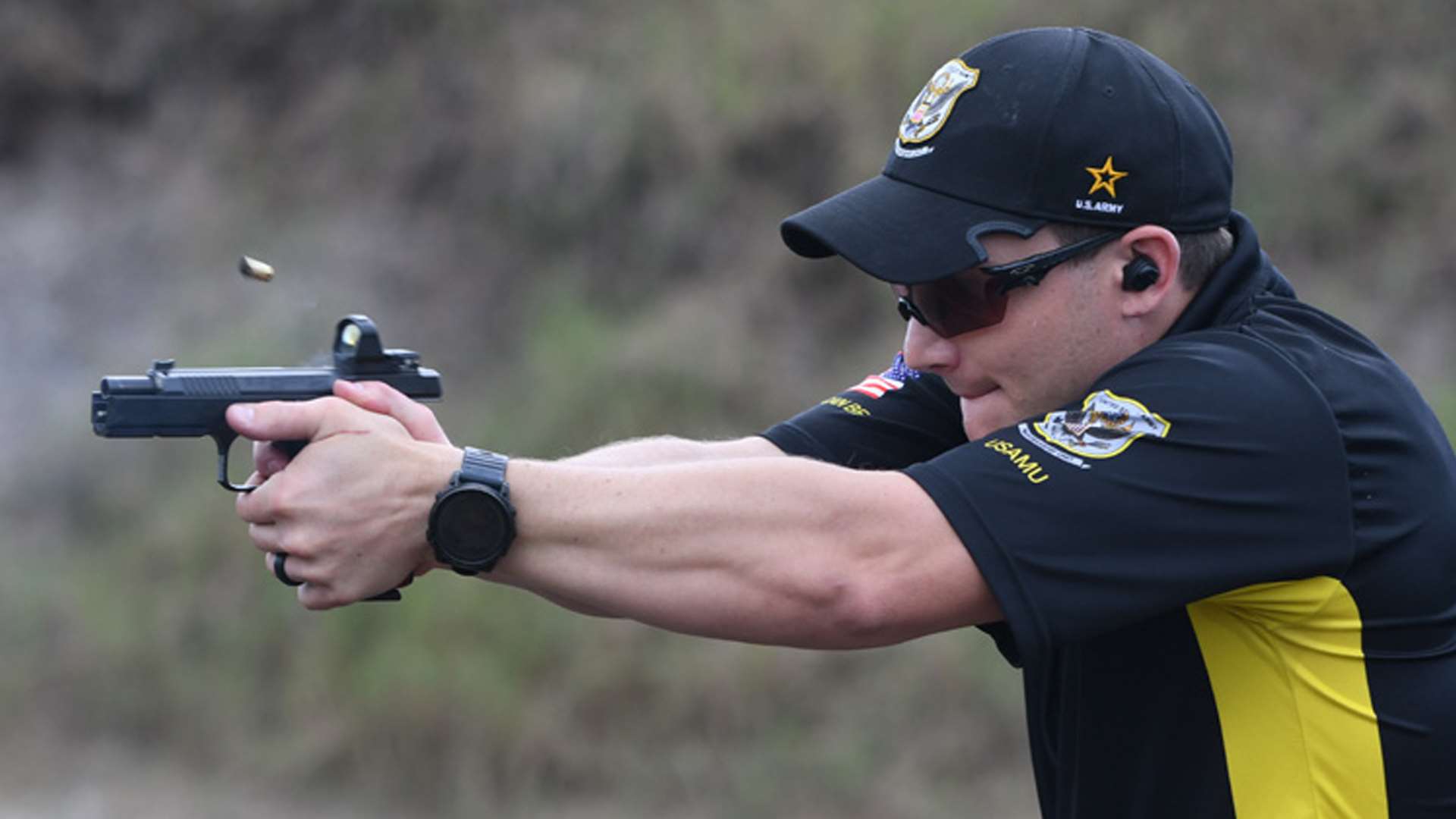
Stage 15 had two activated swingers, and you had to go side to side and then back in order to engage everything on this 12-round stage. Stage 16 was again a 12-round stage with two poppers with an L-shaped shooting area. Stage 17 had the longest shots of the match and one of the toughest swingers that was only available between two no-shoot IPSC steel targets. They made a distinct sound when getting hit, too. Stage 18 wrapped up the match and was the “one shot per target” stage.
Even in the difficult weather and range conditions, the match was fun to shoot under the different ruleset. Lots of regular USPSA competitors learned more about IPSC rules, especially with the many IROA international range officers who came to work the match. A big thanks goes to Gorka Ibanez as the range owner and host, plus all the hard working Volusia County Gun Club volunteers that helped to make the match a success. Manny Bragg put together 18 challenging stages that gave us a feel for an IPSC match, even with staying very USPSA-like on several of them. Thanks also goes to all the range officers, both USPSA and IROA, who toughed it out over the four days.
The U.S. IPSC Nationals for 2024 are going to be at Rio Salado in Mesa, Arizona. The registration opened in December, and the match filled up quickly. Check the website for more information, and get on the waitlist if you are interested. It will be a World Shoot qualifying match.
Article from the January/February 2024 issue of USPSA’s magazine. Photos by Jake Martens.















